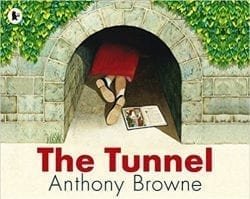- 3 January 2018
- English, Literacy, Resources, Teaching
- MJ's Resources
- 0
So, you have survived the festive season. If you work in key stage 1, that has meant getting through a lot of glitter, glue, snot and singing. But what next? The new year always has me searching for inspiration to keep things in the classroom fresh and exciting. Picture books help to promote children’s curiosity, imagination and language at any time of the year, so here are some of my favourites, both classics and more recent discoveries.
1. The Jolly Postman or Other People’s Letters by Janet and Allan Ahlberg
Always a classic, this book contains removable letters. The children love opening the envelopes on each page and seeing what the postman has delivered. It also fits very nicely with a “once upon a time” topic given the number of familiar fairy tale characters who are receiving letters from the postman.

2. Smiley Shark by Ruth Galloway
The predictable language in this book will get your class joining in and practising their smiles, while the underlying message of working together and acceptance will fit into any PSHE lesson.
3. Where the Wild Things Are by Maurice Sendak
Another classic. If you don’t know it off by heart, are you even really a primary school teacher? This was my favourite book as a child and it always feels magical reading it now with a class. The illustrations still open up a world of possibilities.

4. Dougal’s Deep-Sea Diary by Simon Bartram
It is so important to share your own passions with a class, so that they can see your genuine excitement. As I spend a vast amount of time fantasising about my next diving trip, I can relate wholeheartedly to Dougal. This is a great book for encouraging inference and interest.
5. Five Minutes’ Peace by Jill Murphy
Mothers and fathers everywhere will understand the concept of hiding in the bathroom to get five minutes to themselves. Children find this book very funny and it helps them to understand parental needs, too, which is never a bad thing.

6. Imagine by John Lennon and Amnesty International
What’s not to love about this book? It contains the lyrics of the John Lennon song Imagine, beautifully illustrated by Jean Jullien. Surely our main job as educators is to open up conversations with young minds, and this book is both thought-provoking and a great prompt for discussion.
7. The Tunnel by Anthony Browne
This mysterious book, full of intricate pictures, will leave you and your class with a lot of unanswered questions. Reading it is a fantastic way to explore sibling relationships and feelings of rivalry. I love acting this book out and getting children to physically crawl through a tunnel. The opportunities to promote spoken language are abundant.

8. Refuge by Anne Booth and Sam Usher
This book tells the story of the first Christmas. It is illustrated with a sense of scale. As an adult, my eye is drawn to the images, but as a child, I would not have been able to put this book down. It’s a great read for any time of year. Focusing less on the religious and more on the compassionate elements of the story, this book helps us to understand the modern-day refugee crisis and explain it to children in an age-appropriate way.
Alice Edgington is head of school at St Stephen’s Infant School, Canterbury. She tweets @aliceedgington

